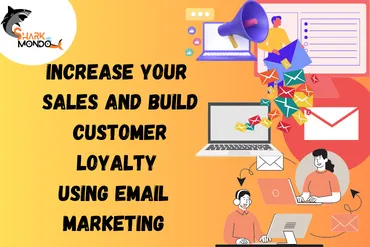Email marketing is a door-to-door channel that allows businesses to communicate new results, new needs, and stay with customers on their connection list. A high return on investment (ROI) is essential to the overall strategy of most companies.
Today’s email marketing has cut out bulk mail and focused on convenience, segmentation, and personalization. It might sound tedious, but the automation itself does the heavy lifting for you. A well thought out email advertising strategy will not only increase your sales in the long term, but also help build communities around your brand.
Table of Contents
Email Marketing Is Important
Email is not a new technology. In fact, email marketing is one of the oldest forms of digital communication, dating back to 1971.
First, mail marketing campaigns are more personalized than social media. The expense is too lower than other channels, specifically considering the gain and conversion rates respective with email marketing
Ultimately, what makes email so powerful and engaging is direct, personal access to your target audience’s inbox.
Still don’t believe it? Let’s look at the numbers:
- In 2020 there will be over 4 billion electronic users worldwide.
- 99% of email users check their email at least once a day.
- 62% of consumers cite email as the preferred communication channel for small businesses.
- 59% say email influences their purchasing decisions.
Statistics show that sales leads and opportunities to build strong customer relationships are lost if you don’t have an email marketing strategy in place.
Email Marketing Benefits
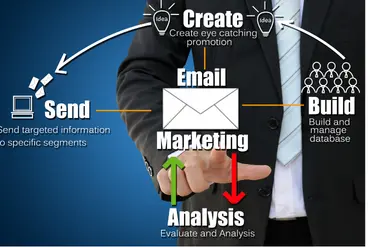
From order confirmation to budgeting, email is essential to growing and managing your business.
It’s helps you achieve three main goals:
- Conversion (sale of goods or services)
Do you want to start selling or advertising? Send these campaigns to your customers to increase your sales. Also, try to use this techniques to increase conversions.
Personal training or birthday/anniversary specials, welcome emails and repeat sponsorships with your audience.
Abandoned cart messages are triggered when a customer adds a product to their cart but doesn’t complete checkout.
- Brand Awareness
Email is handy so you can contact someone directly. This is communication at its finest. Nowadays people don’t have a box anymore. This is a section dedicated to your favorite brands and publications.
Being in someone’s box helps keep your brand fresh in the minds of customers. One-to-one this is more effective than social media, where you never know if someone will actually see your message.
One of the biggest benefits of email marketing is its possible to scale. While social media is an important channel for any online marketing tool, email has many benefits.
- Customer Retention
Email engages customers at every stage of the customer journey, including lead nurturing, conversion, adoption, and retention. Additionally, using this in conjunction with a sales CRM system is a great tool to streamline communications.
As we explain in our guide to building relationships via email, it’s the most effective way to build a community.
Email Marketing to Improve Customer Loyalty.
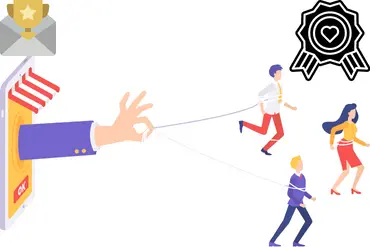
Have you ever received an email saying you heard about and liked the brand? It can be a personal message offering you a discount on your favorite product, or a heartfelt email thanking you for being a loyal customer. Either way, the email will leave a lasting impression on you and increase your chances of doing business with the company.
A business owner or marketer can create a similar meaningful relationship with customers through email advertising. In fact, using email to build customer loyalty is one of the most effective and profitable strategies available.
This article looks at best practices for using email marketing to increase customer retention, from segmenting your email list to creating engaging content. Whether you’re new to this or looking to improve your current strategy, these tips will help you build stronger relationships with your customers and win more customers back.
Email Marketing is the Key to Client Retention
It is one of the most powerful tools you can use to build and maintain strong relationships with your customers. What? Direct mail is a means of communication between you and your audience that allows you to respond to their needs in a personal way.
Communicating regularly with customers via email marketing not only keeps your brand front and center, but also creates an opportunity to build trust and loyalty. By providing customers with valuable content, special offers, and personalized recommendations, you show that you understand their needs and are committed to providing them with a positive experience.
It not only builds credibility, it can also be a powerful tool to increase your sales and revenue. Research shows that customers who receive email advertising pay more and buy more often than those who don’t. When you use your message to build customer relationships and offer free, relevant offers, you can build a better connection between your brand and your audience while increasing your sales.
In general, email marketing is an essential part of a successful customer retention strategy. By using email to communicate with your customers in a meaningful and relevant way, you can retain them, build trust, and build a loyal base that will keep your brand relatable for years to come.
Know your Audience and Segment List.
Knowing your target audience and segmenting your email address accordingly is essential to using email marketing effectively to increase customer retention. It means taking the time to get to know your customers and understand their unique needs and interests. This allows you to personalize your message and content for your customers.
One of the best ways to do this is by segmenting your email list based on demographics, behavior, and past purchase history. For example, you can segment customers who recently bought something, abandoned their cart, or are interested in a specific product or service. By sending targeted messages to these segments, you can directly communicate their interests and needs and provide them with the most relevant content.
By segmenting your mailing list, you can not only deliver more personalized and engaging content to your subscribers, but also improve your email performance. Targeted messages sent to smaller groups can result in higher open and click-through rates, as well as fewer bounce and spam complaints.
Overall, understanding your audience and segmenting your email address are important steps in developing a successful email marketing strategy for customer retention. By taking the time to understand your customers’ unique needs and interests, you can provide a more relevant and timely service that will keep them coming back.
Types of Marketing Emails
Affiliate marketers can have a promotional, educational, or specific purpose along the customer journey.
Promotional Emails
Email marketing campaigns are used to display limited content such as special offers, new product launches, emails and webinars to promote your brand at scale. A campaign can consist of 3-10 emails sent over days or weeks.
Email promotions include a clear call-to-action (CTA). A CTA states the specific action you want your readers to take, e.g. B. Visiting a page on your website or using a coupon for a purchase.
How often these marketing emails are sent usually depends on your company’s sales and marketing plan.
During important times like Friday Nigeria, you can send multiple promotional items within 24 hours. In the calendar period itself, there can be weeks between the actions.
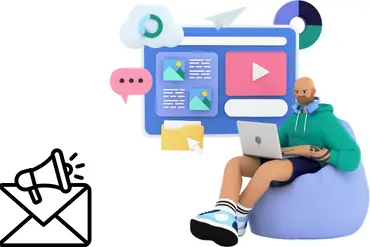
Informational Emails
Newsletter = As the name suggests, this is a newsletter that spreads news from your company. Reflection: Reach new milestones, new product lines, or view valuable content as a case study. A regular newsletter, whether weekly, fortnightly, or monthly, will help you stay in touch with your email subscribers.
In short, a blog is an opportunity to share thoughts, ideas, advice, and anything else that is most valuable to your audience.
For more information on how to create a newsletter, see our article.
Announcements = Email is a great way to let customers know about company announcements, new product launches, service changes, and more.
Email is almost always the way to get important information. In the event of a website outage, late delivery or system/software failure, the best way to keep in touch is to update your contact details via email. It’s sure and immediate, even in keeping with the solemn tone of the director’s announcements.
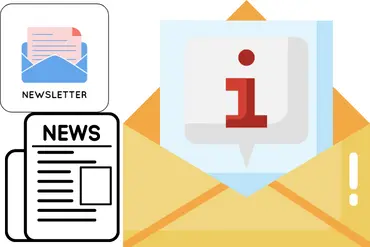
Re-engagement Emails
Another important form of email marketing is responsive emails. As the name suggests, Reengage members help you re-engage recently expired customers and subscribers.
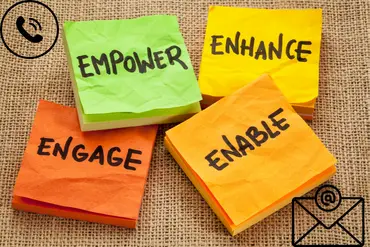
Craft Compelling Subject Lines and Pre-headers
Providing a compelling and engaging subject line is critical to a successful email marketing campaign. What? These are the first things your customers see when they receive your email, and whether or not they open your email and unsubscribe can make or break your success.
A good website should be strong, relevant and interesting. You need to pique customers’ curiosity and entice them to click and try more. Effective strategies for generating strong leads include humor, asking questions, creating urgency, and offering solutions to customer problems.
In addition to the subject line, the main title is also important. This is the small text that appears below or next to the subject line in most email clients. This is your chance to get your subscribers to open your emails by providing more contextual and engaging information.
Before you write your header, you should keep the purpose of your email clear and concise, and highlight some of the things and benefits you want your subscribers to receive. Avoid generic or vague language and instead focus on building anticipation and excitement.
Overall, creating a punchline and opening elements are keys to creating an email marketing campaign that will grab your customers’ attention and motivate them to engage with your content. By taking the time to craft relevant and engaging messages, you can increase your open and click-through rates, which increases customer engagement and retention.
Design an Email Marketing Strategy using Customer Data
Using customer data is a smart and effective way to develop email marketing strategies to increase customer retention. By analyzing the data we collect from our customers, we can better understand their behavior, preferences and interests and use this information to create more personalized and engaging email campaigns.
One of the first ways to use data is through consulting. By combining customers with factors such as past purchases, browsing behavior and demographic information, you can send targeted messages and offers that best match their interests and needs. Over time, this fight grows and lasts more rounds.
Beyond marketing, customer data can help identify trends and opportunities to improve your email marketing strategy. For example, you might find that some types of content or offers are more effective than others, or that certain subject lines or calls-to-action generate more clicks. By analyzing this data, you can improve your strategies and make timely decisions to improve the performance of your reports.
It’s important to note that using customer data to improve your email marketing strategy requires careful handling of personal data. Be transparent to your customers about how their data is being collected and used, and ensure that all relevant data protection regulations are complied with.
Overall, using customer data to develop an email marketing strategy is an effective way to increase customer retention and engagement. By analyzing customer behavior and preferences, you can create targeted, personalized, and effective email campaigns that engage your audience and attract more returning customers.
Summary
Email marketing is a powerful tool for building customer loyalty and increasing engagement with your audience. It includes optimizing your email campaigns for your audience, segmenting your email address, creating send lines and presets, creating personalized content relevant to your audience, and developing a marketing strategy. It is important to prove the data we use.
Plus, you can save time and increase engagement with the benefits of email automation. Also, A/B testing emails help improve results and performance. A clear call-to-action in your email and encouraging social activity and word of mouth are also effective strategies for increasing engagement and retention.
Finally, tracking and measuring email marketing success is essential to understanding your marketing campaigns and identifying areas for improvement. By regularly analyzing key metrics like open rates, click-through rates, and purchase conversion, you can understand the effectiveness of your email campaigns and make informed decisions to improve your strategy over time.
By implementing these best practices and repeating your approach over and over again, you can use email marketing to strengthen customer relationships, increase engagement, and ultimately increase customer loyalty. For best Email advertising contact Sharkmondo.
